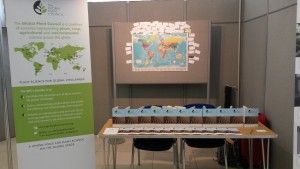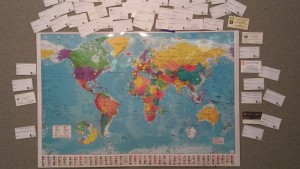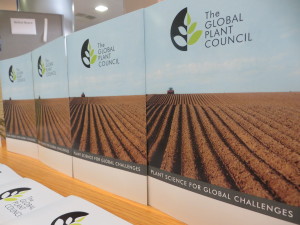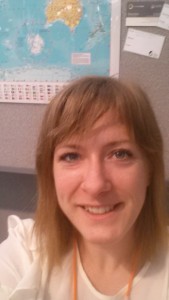Ruth and I recently flew out to Minneapolis, Minnesota, USA, to attend the American Society of Plant Biologists’ (ASPB) annual conference, Plant Biology 2015.
Ruth did a sterling job of live-tweeting the scientific sessions she attended. She also spent some time stationed at the ASPB booth to talk to people about the Global Plant Council (GPC), as well as a big project we’re helping to bring to life: Plantae.org. I’ll talk more about what I did at the conference later… But first, what is Plantae.org?
The Evolution of Plantae.org
Some time ago, here at the GPC, we thought it would be a great idea if there was one, online location where plant scientists and teachers could go to look for and share new ideas, tools and resources for research and education. We tentatively called it the ‘Plant Knowledge Hub’, and set about looking for people or organizations that might be able to help us make it a reality.
In doing so, we discovered that the ASPB was interested in creating a kind of community networking and collaboration platform, for which they had the working title ‘Plant Science Exchange’. Joining forces, we decided to combine the two ideas into one big portal, now called ‘Plantae’. Extending beyond the ASPB membership, Plantae will be for plant scientists and educators all over the world. We hope it will become the leading plant science resource hub and community gathering place.
At this point, I should also mention the Society for Experimental Biology (SEB), without whose help the GPC would not have been able to move forward with this project. The SEB generously provided enough funding for my post! I joined the GPC in February as the Outreach & Communications Manager, so as well as looking after the GPC’s internal and external communications and helping to spread the word about the work of the GPC, one of my main duties is to identify and curate tools, resources and plant science information to upload to Plantae.
Building Plantae.org
I’ve made a few simple websites in the past, but nothing as complicated as an entire ‘digital ecosystem’ so taking the ‘Plant Science Knowledge Exchange Hub’ from an idea to the reality of Plantae.org was going to be a mammoth task. Fortunately we have had a lot of help!
Susan Cato, the ASPB’s Director of Member Services and Digital Marketing, and her team, have been doing a stellar job of pulling different stakeholder groups together to build and develop the Plantae platform. As well as a group of web architects to build the portal’s infrastructure, an agency called LookThink has been involved, with the unenviable task of optimizing the user experience. It’s no mean feat to take our ideas about what the platform should do, and the practicalities of how it can be built, to ensure that the final online product actually does what users want and need it to do in an intuitive, user-friendly way!
Ultimately, Plantae.org will have features such as Facebook or LinkedIn-style user profiles and groups, with the ability to ‘connect’, interact and send private messages. It will have public and private discussion boards where scientists can collaborate, talk about issues in science, or ask questions to the community and have them answered. It will eventually contain hundreds and thousands of pages of content including research papers, teaching resources, videos, posters and much more, some of which will be curated by groups like the GPC, and others uploaded directly by members. Underlying all of this, the portal needs a robust, intuitive search engine to allow users to find exactly the contact they are looking for.
User Testing the Beta Version
 So during the ASPB conference, I was to be found in a meeting room with Clare Torrans from LookThink, helping her to conduct some user experience analysis on an early beta version of the Plantae site. We recruited a range of potential Plantae users – from students through to senior professors – and asked them to tell us what they thought of the idea of Plantae, whether they would use it and find it useful, whether the icons, buttons and links on the screen did what they expected, and what else they would like Plantae to do.
So during the ASPB conference, I was to be found in a meeting room with Clare Torrans from LookThink, helping her to conduct some user experience analysis on an early beta version of the Plantae site. We recruited a range of potential Plantae users – from students through to senior professors – and asked them to tell us what they thought of the idea of Plantae, whether they would use it and find it useful, whether the icons, buttons and links on the screen did what they expected, and what else they would like Plantae to do.
I’d never consciously considered the ‘user experience’ of a website before, but having spent time with Clare, I now realize it’s a vital part of the build process – and now I’m analyzing every website I visit!
The feedback we received was varied: there were some clear patterns related to age, academic level, or previous experience with social media, some people pointed out elements of the site I hadn’t even noticed, or misinterpreted buttons I’d thought were obvious, but – positive or negative – all of the feedback we received was useful and will be fed back into the site development process.
When can I start using Plantae?
The site isn’t quite ready yet, but taking into account all of the data we obtained from the user testing sessions at Plant Biology 15, we will hopefully be ready for launch in the Autumn. Watch this space for more news!









